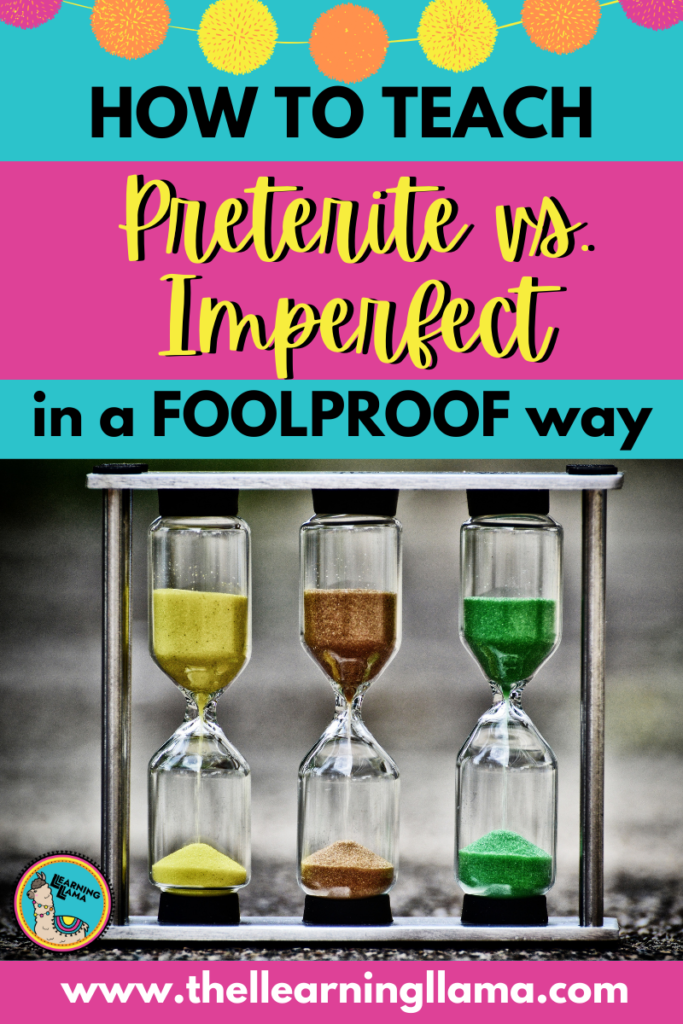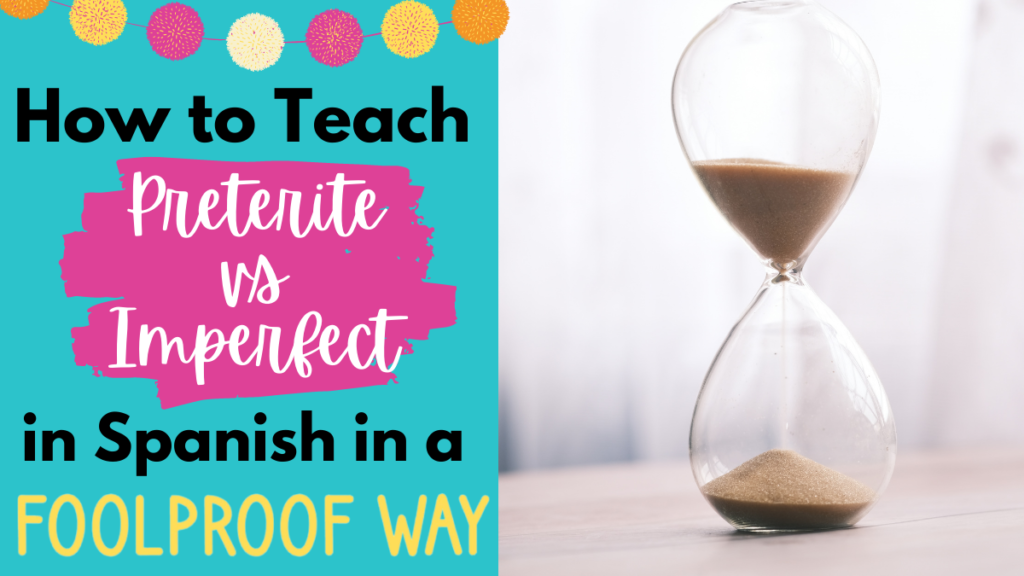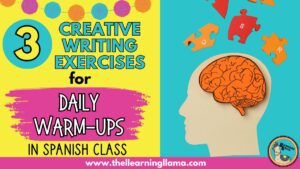The dreaded preterite vs imperfect lesson… we all know you can do boring grammar drills to hone in on the difference between preterite and imperfect. But will that teach your students how to communicate using these past tense conjugations? After a few years of teaching preterite vs imperfect to my Spanish 3 students, I have found some of the most successful ways to help my students understand the difference between the two in a way that they really enjoy!
Follow along through the blog to see how I teach preterite vs imperfect. Just a disclaimer: before these lessons, my students already know the preterit conjugations and have been introduced to the imperfect endings. This is where we put both forms together in a communicative way.
Preterite vs Imperfect Key Words
To introduce the difference between preterite and imperfect, start with key words. These include: todos los días, cuando era niño, ayer, etc. I post sentences on the board in two columns, like this:
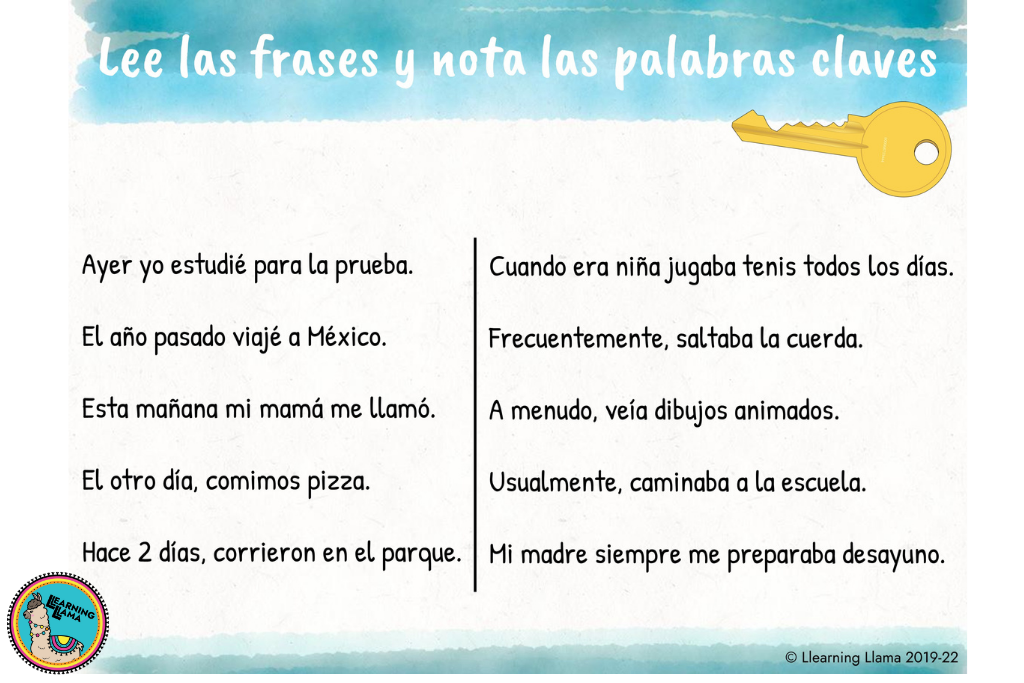
I begin by asking students to identify the key words that they notice. As they share out the key phrases, I underline them on the white board. Anytime they mention a preterite key phrase, I underline it using a red marker; and I use green for imperfect. Once we do that, they are able to come to a conclusion as to why one column is preterite and the other is imperfect. They are already beginning to notice a pattern and grammar rule without me needing to mention it. At this point, I will begin to say (over and over again) “If you can measure it… it’s preterite.” I stress that if you can measure a specific amount of time or identify a day, then it is preterite, but if the time is vague or high in frequency, then it is imperfect.
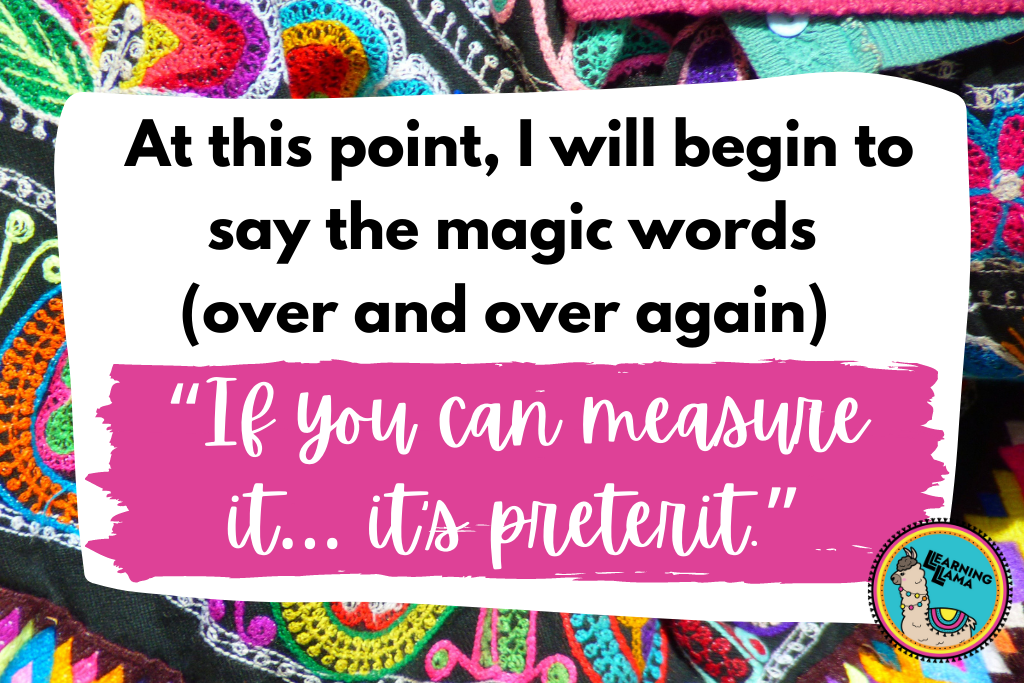
Now, to practice the key phrases, I like to play a fun game with my students. I pass out two small pieces of paper to each of my students – red: preterito; green: imperfecto. As I say or project a key word onto the board, students will hold up the corresponding color for the grammar tense. Keep the same color coded theme throughout the entire duration of the year. Whenever you talk about preterite and imperfect, let these colors be synonymous with each grammar tense. For a complete lesson on the key words and differences with preterite and imperfect, check this out! Or for a digital version, click here.
Mnemonic Devices
Mnemonic devices are memory techniques to help you recall and retain information. Ever since I was little, I loved using mnemonic devices to remember new learning material. In elementary school, it was “Please Excuse My Dear Aunt Sally” in math class, and as a piano teacher, I am always sharing fun mnemonic devices to remember the order of notes on the staff.
So, I had to find one to help my students with preterite vs imperfect, and my favorite is SIMBA CHEATED.
As I introduce the different uses of preterite and imperfect, I always give an example sentence. For example, with S – single action: Ayer, mi madre llamó al médico. C – characteristics: El estudiante era trabajador. Now, it is the kids’ turn to put this mnemonic device to work!
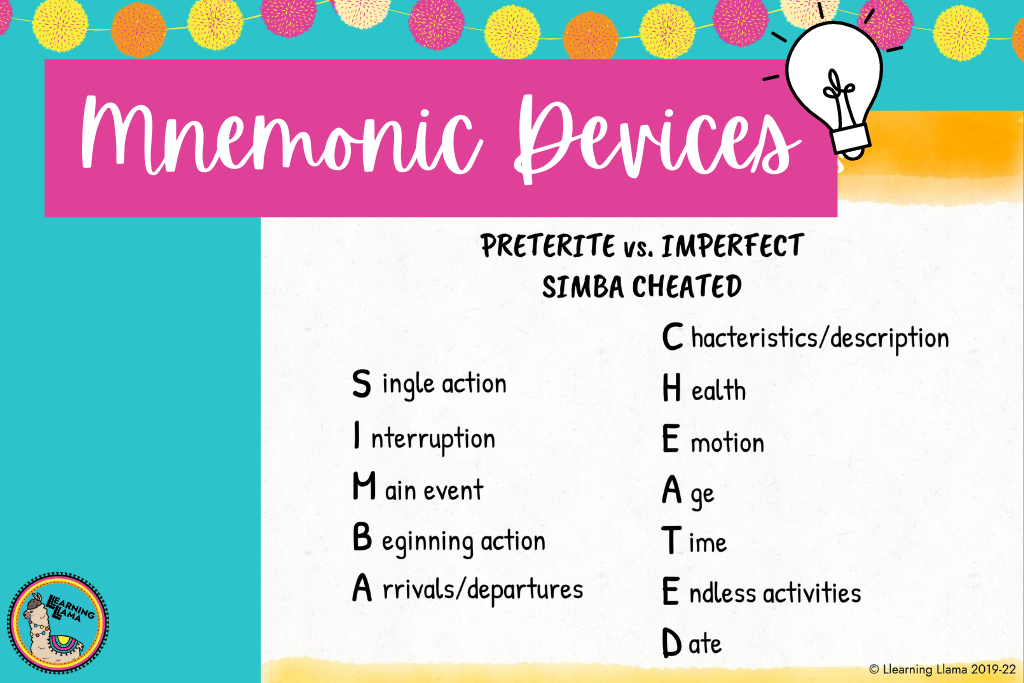
One of my favorite activities to practice Simba Cheated is a gallery walk. I print out sheets with the title of each letter of the mnemonic device (see below) and post them on the walls around my classroom. Students are asked to walk around and write at least 5 original sentences. (You can do this as a rotating gallery walk, a free-range gallery walk, or even have small groups each assigned to a few posters.) The goal is for students to write a complete sentence in the appropriate past tense based on the mnemonic device. This activity is included in my preterite vs imperfect lesson found here.
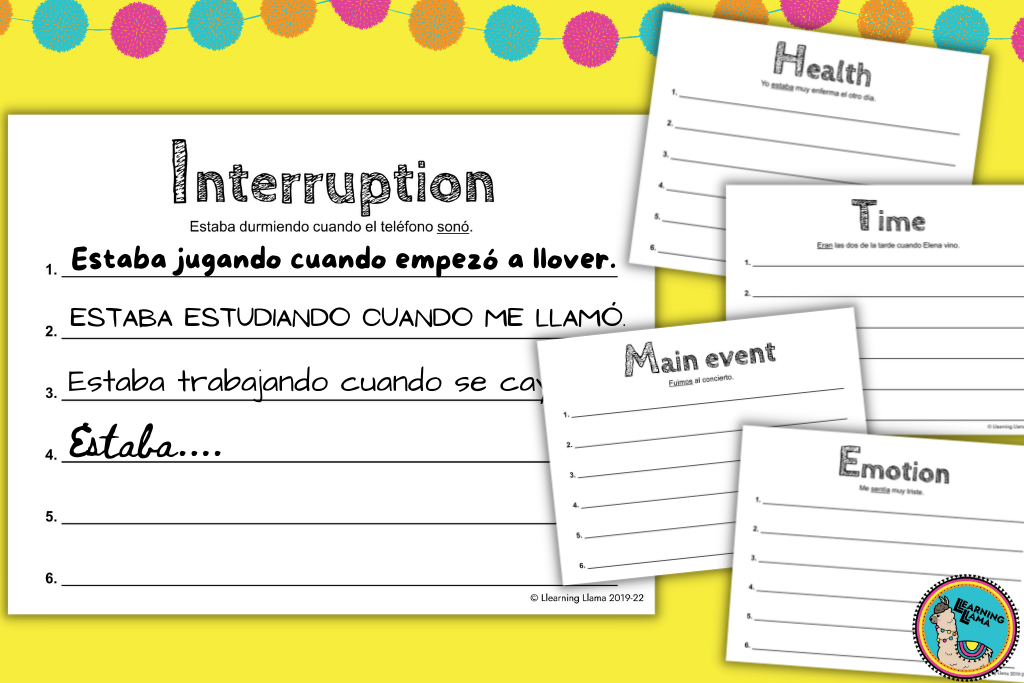
Preterite vs Imperfect Memes
What better way to connect with high school aged students than with memes. Memes also have the ability to ease the tension or release stress when you know you’re about to teach one of the most challenging grammar concepts in the language. Find memes that include preterite and imperfect uses and as students read for understanding, they will start to understand why each form is used.
Then, once they’ve really mastered the past tense, they can make their own memes and have a meme contest! Vote for the best memes! Check out how I use memes in my classroom here.
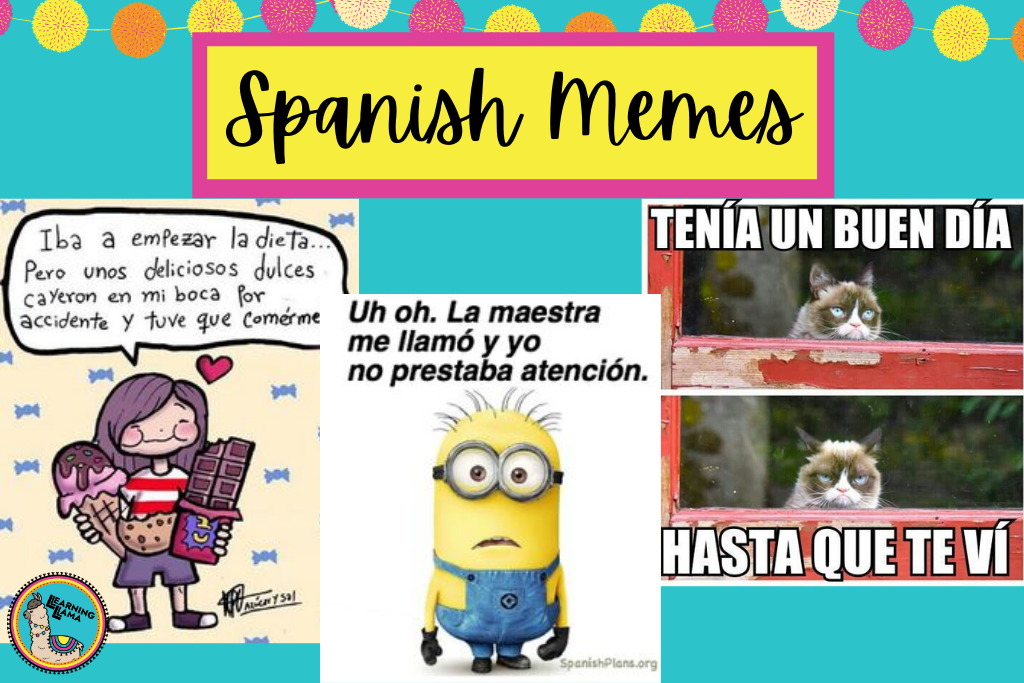
Read short stories
Almost every short story, legend, fairy tale, etc. will have the preterite and imperfect tenses. I have gathered tons of Spanish children’s books from Scholastic sales, yard sales, and library book sales. Each year, I switched up my readings, just for fun! There are so many cute stories to choose from. The websites Cuentos para dormir and Cuentos cortos are filled with tons of short stories on various themes and topics, too!
Reading short stories is the best way for students to get a better understanding of when each past tense form is used. They will start to notice a pattern of imperfect tense located at the beginning of a story, setting up the scene, describing characters, and providing background information. As the story progresses, the past tense generally switches to preterite, listing the events and actions that occur.
As your students read, they can do a close reading for these two tenses. I recommend using the red and green color-coded system here and they can highlight or underline the uses of each tense throughout the story. Make sure as they do this, they also circle or draw an arrow to demonstrate why it is that tense. They can use the SIMBA CHEATED letters to annotate next to each verb tense.
Presentational Writing Projects
Then, to culminate the entire unit, students should write their own short story, using the preterite and imperfect. I always based my entire past tense unit around fairy tales and legends. As I previously mentioned, seeing these tenses in stories really helps with understanding when to use each. It is one thing for students to be able to read and interpret short stories in the past tense, but their ultimate goal with this unit should be to use it! What better way than through an authentic project?
Your students will become authors! They will brainstorm, write, and produce their own fairy tale or children’s book. In the past, my students have written really creative fairy tales with this project. Again, this is after we have read various fairy tales and short stories, so they have experience with them in the target language.
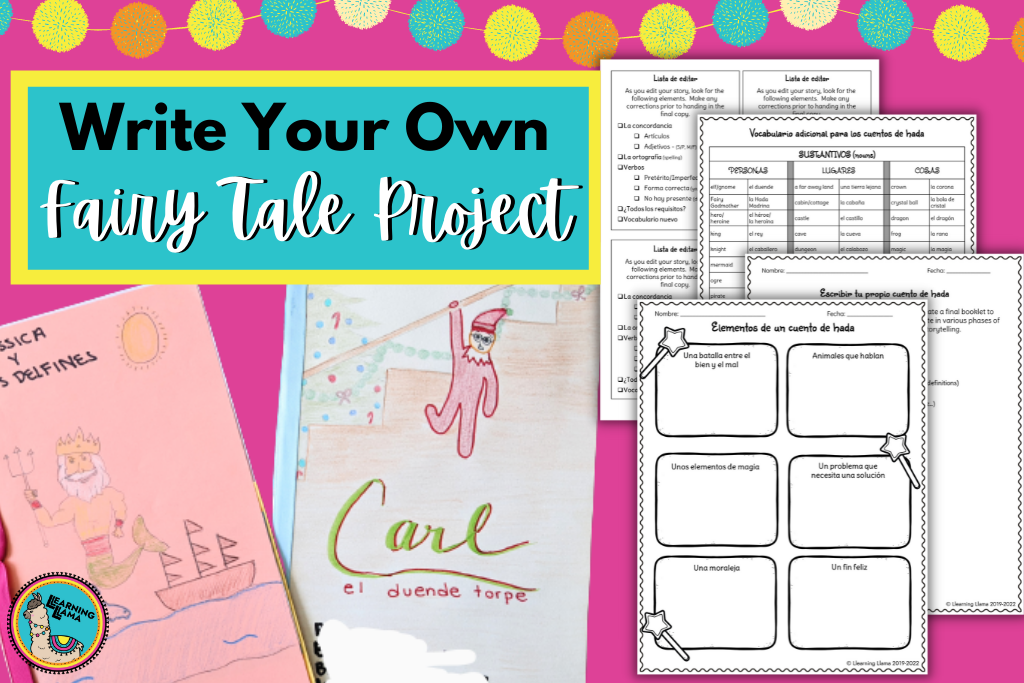
Ask students what the elements of a fairy tale or children’s book are. They should come up with a list of requirements or essentials to put in their story. Then, they must incorporate all of those into their stories, including the use of the preterite and imperfect. For example, my students were required to have animals that talk, well-developed characters, a moral, etc. Have graphic organizers for them to complete or brainstorming worksheets that keep them on track before beginning their rough draft.
Their final copy should be a little booklet that they can read during story time or display around the room like in a library! Celebrate their successes and final products!
Preterit vs Imperfect Escape Room
Once you have taught the preterit vs. imperfect, you are ready for some fun! Put students’ knowledge to the test with an escape room. This will combine everything they have learned so far and put it into practice in a fun, interactive way. With this specific pasado escape room, students compete to solve five puzzles. The locks include:
- Identifying the difference between preterit and imperfect verbs using SIMBA CHEATED (so you are reviewing the first step of the lesson mentioned above)
- Reading tongue twisters
- Reading a short story & choosing between preterit and imperfect verbs
- Conjugating verbs in the preterit vs imperfect
- Listening to a song and filling in the missing verbs
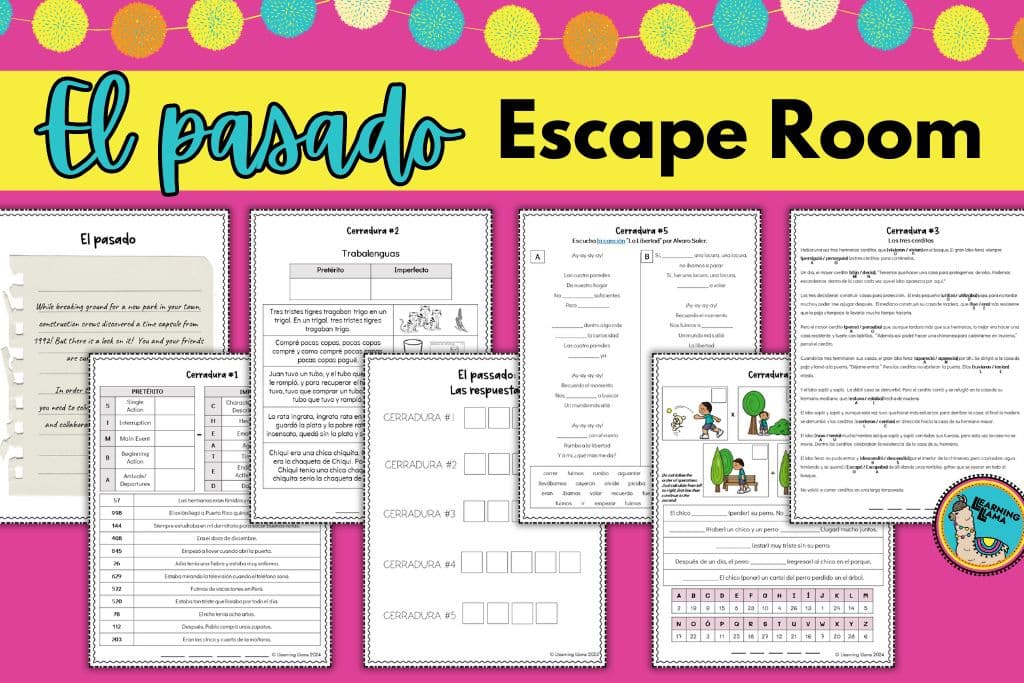
I hope these preterite vs imperfect activities help your students understand the differences between these tenses better than ever before! You can teach these two concepts in a comprehensible way with reading short stories, an inductive grammar approach, and mnemonic devices. Grammar has never been more fun!
